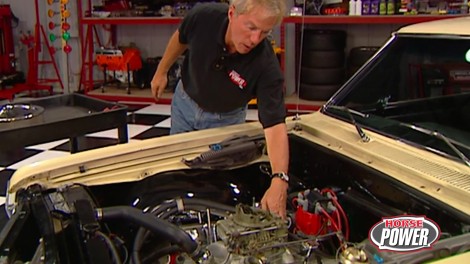
EFI CONVERSION, MOPAR WEEKEND
In this project, we upgrade the 1965 Chevy wagon's mechanical fuel system to a modern electronic fuel injection using an Edelbrock kit, which includes a 750 CFM throttle body and a new intake. This transformation involves meticulous steps, from modifying the distributor to installing a high-pressure fuel line and reconfiguring the wiring, all aimed at boosting the vehicle's horsepower. Our final test shows a significant power increase from 180 to 220 rear-wheel horsepower, confirming the effectiveness of our upgrade.
Season 5
Episode 2
Hosts: Joe Elmore, Chuck Hanson
First Air Date: September 23, 2022
Duration: 19 minutes 18 seconds




























